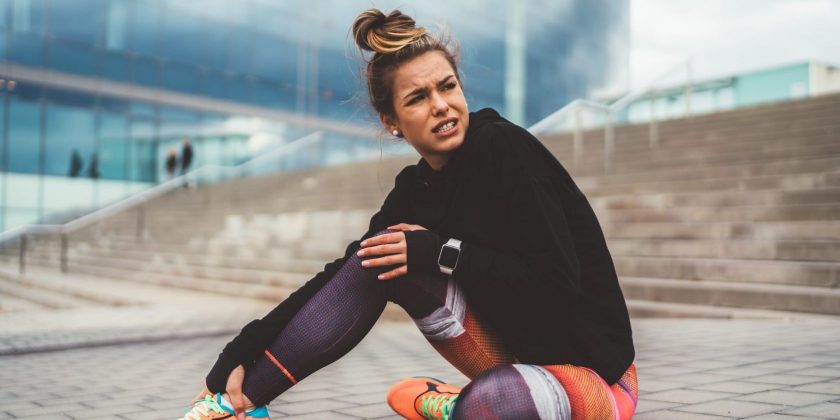Do you keep feeling a sharp pain in your Achilles tendon when you set out to run? Forget changing trainers or investing in expensive massages – try these three hip openers instead.
One of the most common running issues has to be Achilles tendon pain. I’ve had it for years, trying everything from massage and physiotherapy to massage guns, tendonitis socks and single-leg balancing to try to reduce it. The only thing that’s really worked is decreasing the load: reducing the number of miles run per week and taking proper rest days.
Resting, however, usually doesn’t get to the core of why we experience tendon pain when we run. You rest or decrease your mileage, it subsides and the next time you want to train for something, the pain comes back. And then I stumbled across a post by runner and physical therapist Dr Lisa, explaining that chronic Achilles pain may actually be caused by tight hips.
You may also like
Hip workout: this two-week glute-activating challenge eases tightness and pain
“When you run and your hips are tight… you actually create more stress with each foot strike into your Achilles,” she explains. And if you don’t have great hip or pelvic stability, your foot and ankle have to work overtime to compensate.
That makes a lot of sense. We’ve spoken about referred pain before – specifically when it comes to running – about how painful knees are often more a result of weak glutes than dodgy cartilage. But a few months ago, I went to see a physio for a general running MOT who got me down on the ground to do a series of hip and pelvis strengthening exercises, including kneeling side planks (touching bum to the floor), clamshells and hip thrusts.
Despite doing a fair bit of balancing, the odd spot of yoga and some strength training, I was in agony by the fifth rep of each exercise… suggesting that perhaps I wasn’t as strong and stable in the hips as I thought.
A study published in the journal Medicine & Science In Sports & Exercise found that runners who had some form of Achilles tendinopathy (the general term for tendon pain and damage) tended to have hips that moved in unusual ways when they ran compared to runners who had no pain.
Australian researchers suggested that those injured runners may have adopted a weird way of running because their tendons hurt, but they also flagged that undiagnosed hip problems may have caused the Achilles pain in the first place. In other words, like the proverbial chicken and egg, our hips and Achilles tendons are linked.
Dr Lisa recommends first seeing a professional to diagnose your tendon trouble, and then having a go at these three exercises to address imbalances higher up the kinetic chain.
Side steps
Grab a resistance band and get ready for a deceptively simple lateral walk. You don’t need a lot of room – two or three steps each way is enough to get a burn on. Set your timer for a minute and repeat five times.
- Place your band around your feet
- Take two or three steps to the right, stretching as wide as your hips
- Keep a slight bend in the knees and engage the core and glutes
- Repeat on the left-hand side
Scorpions
Scorpions begin with you lying on your stomach and extending your leg behind you to open into the hips and stretch through the spine. The name comes from the shape you make at the deepest part of the shape with your leg fully bent to your opposite side, like a scorpion’s tale.
- Lie on your mat on your stomach. Extend your arms out wide at shoulder level.
- Turn your head to look at your left fingers so your right ear is on the ground.
- Lift your left leg off the floor and bend the knee.
- Take the leg across the body towards your right fingers. It doesn’t matter if it doesn’t make it all the way, but try to pull away from your hips and twist your spine to enhance the stretch.
- Take a deep breath at the end of the posture before you release back to the starting pose.
- Repeat on the other side.
Pistol squat
Pistol squats are pretty advanced, so don’t think you have to try to get all the way to the ground and up to reap the benefits. If you’re in the gym, use a box or bench; at home, a stool or sofa could work well as a buffer.
- Stand in front of a box, chair, sofa or equivalent, with your feet shoulder-width apart.
- Place your weight onto your right foot and lift your left foot off of the floor.
- Begin to bend your right knee to lower yourself down to sit on the chair or box. Go slow to control the movement.
- Push through your right heel to lift yourself back to standing.
For more running tips, visit the Strong Women Training Club.
Images: Getty
Source: Read Full Article
